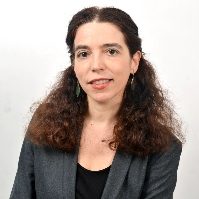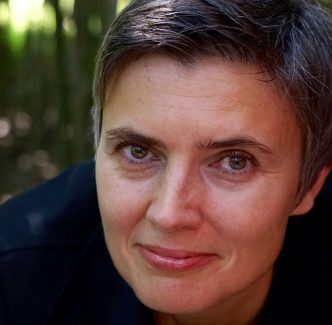
Luca Maria Aiello
ITU Copenhagen Denmark
Coloring Social Relationships
Abstract
Social relationships are the key determinant of crucial societal outcomes, including diffusion of innovation, productivity, happiness, and life expectancy. To better attain such outcomes at scale, it is therefore paramount to have technologies that can effectively capture the type of social relationships from digital data. NLP researchers have tried to do so from conversational text but mostly focusing on sentiment or topic mining, techniques that fall short on either conciseness or exhaustiveness. We propose a theoretical model of 10 dimensions (colors) of social relationships that is backed by decades of research in social sciences and that captures most of the common relationship types. We trained a deep-learning model to accurately classify text along these ten dimensions. By applying this tool on large-scale conversational data, we show that the combination of the predicted dimensions suggests both the types of relationships people entertain and the types of real-world communities they shape. We believe that the ability of capturing interpretable social dimensions from language using AI will help closing the gap between the oversimplified social constructs that existing social network analysis methods can measure and the multifaceted understanding of social dynamics that has been developed by decades of theoretical research.
Short bio
Ginestra Bianconi
Queen Mary University UK
The dynamics of higher-order networks: the effect of topology and triadic interactions
Abstract
Higher-order networks capture the interactions among two or more nodes in complex systems ranging from the brain, to chemical reaction networks. Here we show that higher-order interactions are responsible for new dynamical processes that cannot be observed in pairwise networks.
We will cover how topology is key to define synchronization of topological signals, i.e. dynamical signals defined not only on nodes but also on links, triangles and higher-dimensional simplices in simplicial complexes. Interesting topological synchronization dictated by the Dirac operator can lead to the spontaneous emergence of a rhythmic phase where the synchronization order parameter displays low frequency oscillations which might shed light on possible topological mechanisms for the emergence of brain rhythms.
We will also reveal how triadic interactions can turn percolation into a fully-fledged dynamical process in which nodes can turn on and off intermittently in a periodic fashion or even chaotically leading to period doubling and a route to chaos of the percolation order parameter.

Víctor M. Eguíluz
University of the Balearic Islands Spain
Complex systems perspective on the ocean ecosystem
Abstract
The ocean plays a central role in the Earth system. It regulates geophysical processes and is thus crucial to understand the pace of global change. It is also the largest ecosystem and thus host of biodiversity. Understanding the interactions among physical, natural, and human processes, how they evolve in time and how they participate in the functioning of ecosystems is thus of crucial importance. The development of novel techniques under the umbrella of Big Data analytics and Data science offers new opportunities for complex systems to analyze the Ocean system. We will present opportunities and challenges for complex systems in this context and in particular recent advances in the analysis of the largest multi-taxa marine megafauna tracking dataset recently assembled.
Short bio
Adriana Iamnitchi
Maastricht University Netherlands
Taming the Wild West of Social Media: The Digital Services Act and its Effects on Computational Social Science
Abstract
The surge in social media use over the last decade brought a host of unintended and unanticipated complications, such as disinformation, polarization, and undisclosed content monetization. Some of these problems can be traced back to the lack of regulation governing the digital interactions, algorithmic decisions, monetization, and business strategies that shape the social media landscape. In an effort to address these issues, the European Union has recently approved the Digital Services Act (DSA), aiming to better regulate online spaces, including social media platforms. This talk will delve into challenges and opportunities that the implementation and enforcement of the DSA may bring for computational social scientists.
Short bio
Rosario N. Mantegna
Palermo University Italy
Social anatomy of a financial bubble
Abstract
The study of financial bubbles is a highly controversial topics in economics and finance. Despite a large number of economic analyses, anecdotal evidence and increased theoretical attention, the quantitative monitoring and modeling of financial bubbles still miss standards broadly accepted by scholars. Our study focuses on the famous dotcom bubble that inflated financial markets during the period 1995-2000. Specifically, we investigate Nokia share ownership during the onset of the bubble and during its aftermath up to 2010 by investigating a unique database that tracks the financial ownership of all Finnish legal entities. We document a persistent flow of investment from foreign investors in the Nokia company during the inflation period of the bubble. This is a typical anecdotical scenario observed in the setting of financial bubbles. A second fundamental observation concerns the number of Finnish investors having an open investment position in Nokia at a given day. This number increased more than exponentially during the 1998-2000, reflecting a dramatic raise of attention at a country-wise level during bubble inflation. We exploit the unique combination of studying a multinational company that was among worldwide protagonists during dotcom bubble and a complete coverage of daily financial ownerships for all Finnish investors. The distribution of investment gains and losses was strongly inhomogeneous across different categories of investors. Financial professionals were better equipped to obtain gains during bubble inflation and limit losses when the bubble bursts. On the contrary, investors with limited financial expertise gained during bubble inflation but incurred in significant losses — or struggled to limit them — after the bubble burst.
Joint work with Federico Musciotto (University of Palermo, Italy) and Jyrki Piilo (University of Turku, Finland)
This keynote is sponsored by Applied Network Science, Springer Nature
Short bio
Céline Rozenblat
University of Lausanne Switzerland
Resilience and transitions from local Digital Twins to global complex urban systems
Abstract
In the context of the climate change and energetic and political crises, new tendencies in the long/medium term evolution of urban systems, together with new data and methods, require that existing theoretical assumptions and conceptualizations be challenged as global urban hierarchies are reconfigured and citizens’ aspirations in their urban environments are in strong transformations. The connection between urban systems at different levels of organization becomes more and more relevant for understanding urban systems and their transitions. But the current inter-urban perspective is not sufficient to encompass these dynamics. The evolution of power distributions inside and between cities reshapes the world organization of central/peripheral cities and the complexity of the global urban system. Actors as multinational firms, or high-level innovation centers, participate actively in these reconfigurations that concentrate wealth, control, innovation, and attractiveness in a few cities. At the local level, citizens wish more health and well-being implying better policy coordination between local and national/international scales. In the complexity of this multi-level system, how is regionalization of the world reshaping in a multipolar urban world? How does the multi-level perspective highlight some resilience properties if one integrates environmental care in the urban system? The theories and methodologies derived from complex systems sciences bring new perspectives for urban transitions towards more sustainability and resilience.
Short bio